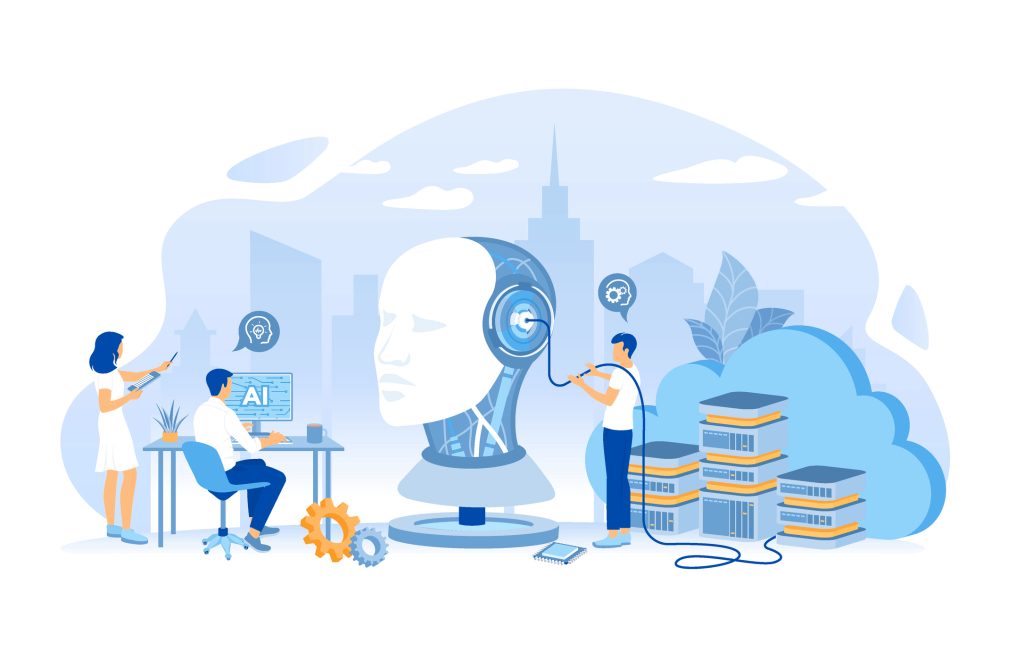As an educator, I spent countless hours searching to find content that would connect my students to the required traditional literary canon and district-supplied curriculum.
The internet has multiplied the number of resources available, making it much easier for teachers to find supplementary materials, but more difficult to determine their quality. Rather than simplifying my teaching, having more materials at my fingertips expanded the time I could commit to seeking just the right text to reach each of my students. It was lonely and perhaps thankless work that thousands of diligent teachers do daily. For me, there was no other way to bring alive literature and curriculum to the variety of students who crossed the threshold to my classroom.
I am not alone. In a 2016 report, Marci Goldberg of K-12 Market Advisors reported that “teachers spend an average of five hours per week creating materials and seven hours per week searching for materials.”
It’s no wonder that among 1,200-plus teachers, principals, and district leaders surveyed by the EdWeek Research Center in November 2021, 67 percent of respondents ranked “having more time to plan or catch up on work” as “very important” when considering whether to take a job in a school or district. It was among the top five most important factors cited by educators when considering taking another job—right up there with health benefits, compensation, and pensions.” At a time of teacher shortages and “learning loss” that demands additional teaching time, educators across America are seeking ways to recover time… more than ever before.
In response to these challenges, many schools and districts have explored or implemented programs supporting their teaching staff teachers by pre-emptively selecting, creating, and distributing a wide range of textual materials that allow teachers to customize, personalize, and contextualize the educational experience for a diverse range of student interests and backgrounds.
However, adopting a more systematic program of creating or adapting curriculum materials for an entire district or school highlights some important questions about schools’ and school districts’ rights and obligations under copyright law. A failure to address compliance with copyright law pro-actively may create legal risk for the school and render work already completed difficult to implement without significant cost and effort to obtain the necessary copyright permission.
The Importance of Copyright Education
Prior to launching any program of locally created or adapted curricular materials, I would recommend the district implement appropriate training in the foundations of copyright law and provide tools and resources to ensure that the development and subsequent use of curricular materials is in compliance with copyright law. Educators, like me, who develop curricular materials for their own use are often surprised to discover they are unable to share those curricular materials in multiple classrooms or districts without first obtaining copyright permission. By complying with copyright up front, the district is able to ensure that the materials can be made widely available and reusable in the classroom. Unfortunately, this can be a difficult task.
Nearly all the materials a teacher, school, or district seeks to distribute in the classroom are subject to copyright. Exceptions include materials in the public domain such as documents and materials the U.S. Federal government creates or any materials too old to qualify for copyright protection (currently those registered or published in 1926 or earlier, though this date gets one year later each January 1). As such, there is very little material of current relevance that can be introduced in the classroom without reviewing the copyright status of that material and, when necessary, obtaining permission to store, duplicate, or distribute that material. Copyright exceptions such as fair use provide some support for the use of materials but they are fact specific, and broad sharing and copying of copyright materials throughout a school district or state—especially if provided by the state department of education or school district—usually requires a license.
While uncommon, publishers have sued school districts for copyright infringement. In October 2019, the Houston Independent School District settled an infringement case for $7.8 million dollars. In a commentary titled “How a School District Wasted $7.8 Million,” Jonathan Bailey wrote, “If anything good can come of this case, it’s as a lesson to others. School districts, much like corporations, need to understand the importance of talking with their rank and file about copyright and the importance of following the law.”
Beyond simply the possibility of wasting money fighting and/or paying an infringement claim, by not pro-actively considering copyright teachers, schools, and districts may be prevented from using curriculum in which they have invested significant time and money creating because of the potentially prohibitive cost and effort to obtain the necessary permissions, which can be very disheartening. If only for this reason, proactive awareness of copyright should be part of a school district’s program prior to embarking on a curriculum development process.
A quality copyright compliance solution begins with a robust educational program for educators and administrators. Key elements of a copyright education program will encompass:
- A basic understanding of copyright and its history and importance in supporting creative activities.
- Consideration of how the TEACH Act and exceptions like fair use apply to the use and distribution of copyrighted materials in the classroom and in online education.
- An understanding of what materials have fallen into the public domain and the potential complexity in making a determination regarding any specific item.
- Clarification of ownership of teacher-developed materials.
- The development and use of Open Educational Resources.
- Types of licenses and licensing options, including Creative Commons and other open licenses.
Many educators mistakenly believe that all educational use of copyrighted materials fall under the fair use exception. While an educational purpose is definitely a key factor in determining whether something is fair use, it is not the only consideration. This is especially true when a use is not specific to a single teacher or a classroom and instead used broadly within a school district.
The Many Strategies for Using Copyrighted Content
Additionally, the district and educators need to proactively determine their approach to including copyrighted material in their curriculum resources. One common strategy is only using materials in the public domain or licensed under a Creative Commons open license, but that limits the range, timeliness, and quality of third-party materials from which the educator can select.
Another strategy is to rely only on links to materials found on the internet. While it’s unlikely that providing links for students to directly access publicly available materials will create risk (as long as the material linked to is not itself a copyright infringement, which could create a secondary liability for the school or district), downloading the linked materials and duplicating them for student use could require permission from the owner of the materials. Links also create additional logistical dependencies for the teacher and student: the link must be active (many links become invalid over time), and the student and teacher must have the necessary devices and internet access. These dependencies create issues of equity that educators and districts need to address. Educators should also bear in mind that respect for authors and their works is simply the right thing to do. Educators should respect the intellectual property of rightsholders and demonstrate it on a daily basis to students who in turn may grow up to be authors and creators themselves someday.
The most secure approach to the use of third-party materials is through a license. A well-written license eliminates the need for fair use analysis or determination of public domain and facilitates access to materials for students. One such license, the Annual Copyright License for Curriculum & Instruction from CCC (Copyright Clearance Center), allows teachers to provide print or digital copies in any quantity to their students. CCC offers a collective licensing model, so districts and educators obtain reuse rights to millions of works under a single license agreement. Of course, districts and educators can still utilize works in the public domain or available under an open license, so the addition of a licensing agreement simply expands the universe of works available for use in the district.
The experience of the Louisiana Department of Education (LDOE) in developing their Guidebooks 2.0 ELA curriculum is illustrative. The Louisiana Department of Education began their search for well-rounded standards-based curricula by turning to publishers in the traditional vendor marketplace. But when they couldn’t find lessons that fit the specific needs of their students, they began to explore alternatives.
Louisiana discovered that they could develop their own high-quality curricula, providing their teachers with the flexibility to tailor their lessons to the needs of their students, while ensuring alignment with the Louisiana state standards. It would also enable them to utilize important supporting materials like newspaper articles, web content, and blog articles, which often are not available through traditional models.
By addressing the copyright compliance question proactively, Louisiana was able to relieve educators of the burden of tracking down all of their readings and worrying about copyright permissions. Making these readings readily available—and making it easy to get permissions to use them—enabled teachers to provide students the opportunity to learn from a diverse range of relevant contextual materials.
As one teacher commented about Guidebooks 2.0, “I was a little intimidated at first because … I’ve been teaching for 16 years and always had a basal reader where students read a story and then answered questions… This is so different. It’s such a variety of texts. Nonfiction and fiction texts are incorporated into every section.”
An Opportunity to Better Support Students and Teachers
Districts and educators have never had such an opportunity as they do today to create engaging, inclusive, and local curriculum materials to assist overburdened teachers to provide texts that engage students and address the diversity of student interests, background, and experiences. But, never before has it also been more important to avoid investing in locally developed, high-quality curricular materials only to find that their use would require additional steps to comply with copyright law.
As a former teacher, I strongly support having a district-provided pool of diverse lessons and materials from which a teacher can draw to support students. A pre-existing pool of lessons would have saved me countless hours of seeking contextual materials to assist me in making connections between my students’ lives and the core content. It would also have eased my concerns about the appropriateness of the content I found and its alignment with state educational standards. Any district, however, electing to pursue the development of curricular materials should have in place a copyright compliance program, which includes comprehensive copyright education for teachers and staff, as well as a well-articulated stance regarding how materials will be selected and used in light of their status under copyright, and ideally, a districtwide collective license to expand the range of materials that educators can use without question.
To see more of the latest content we’ve gathered relevant to both the K-12 and higher education spaces, including featured videos, case studies, and articles, please visit the CCC Academic Community Center.





